Imagine creating a gallery-worthy video without picking up a camera or hiring an editor. That’s the magic of AI in 2025. It’s now the brush, the director, and the composer behind a new wave of creativity. You do not need a movie crew; you just need the right tool and a vision.
You can use it to create reels, marketing ads, explainer animations, and even NFTs. And they’re doing it faster, cheaper, and with less stress than ever before. This article will show you exactly how to make AI art videos and what tools you can trust. Read on!

In this article
Part 1: How AI is Used to Generate Art and Animate Visuals
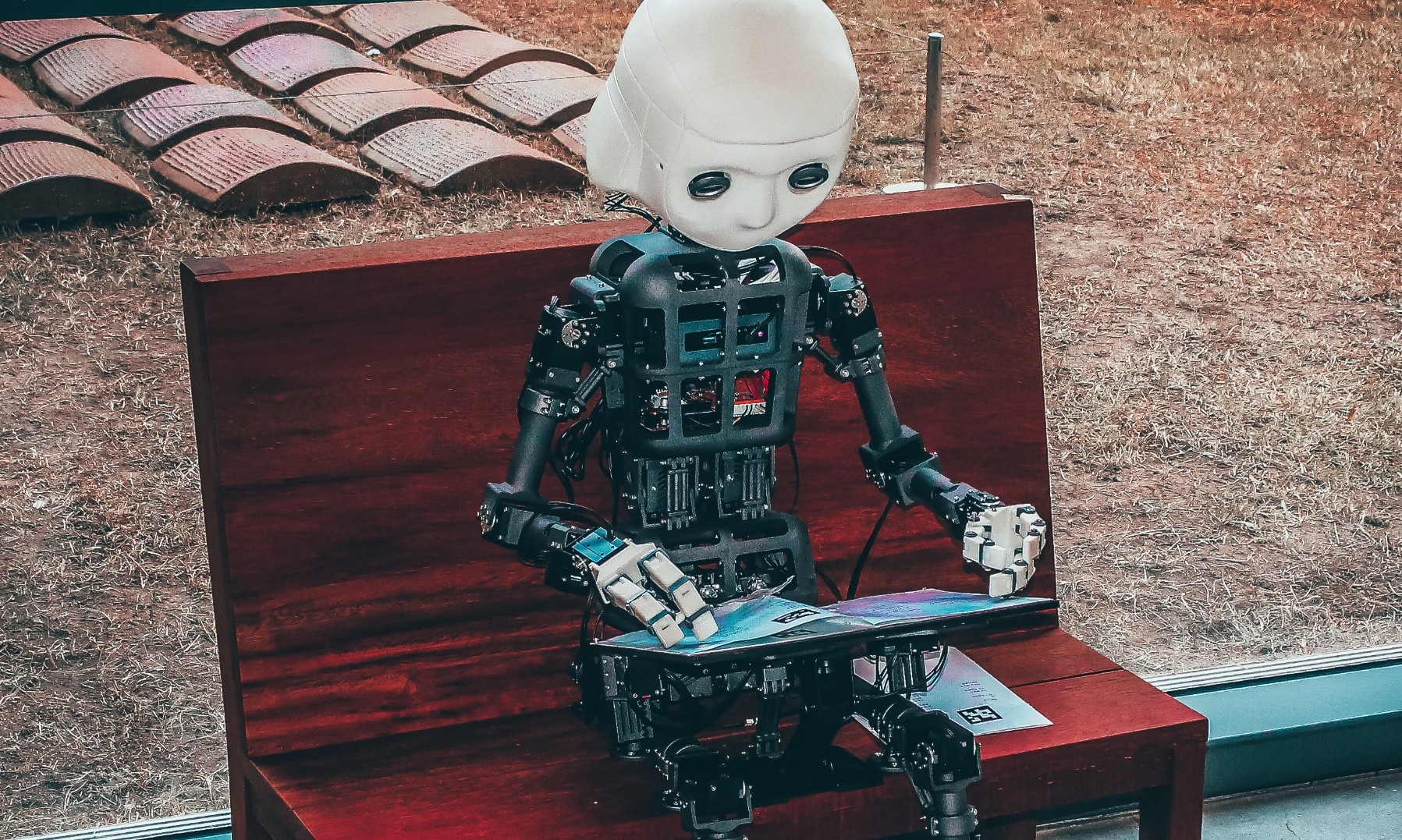
Creating an art video used to take weeks. Today, AI art video tools turn ideas into visuals within minutes. All you need is a prompt and a clear concept.
These tools rely on machine learning trained on thousands of artistic styles. Once you describe what you want, the system selects visuals, transitions, subtitles, and music that match your vision. That’s the core of how to make AI video art.
To get the best results, be specific. Mention what you want—and what to avoid. For example, say “no cartoon effects” or “avoid vintage filters.” Also, choose your tone and video length in advance.
After generation, use the built-in editor to refine your video. Add motion graphics, titles, or voiceovers. Once done, export the project in HD or MP4 format.
Examples of AI Art Video Apps/Tools
Wondershare Filmora is one of the most reliable AI art video tools available. Others include Runway AI, InVideo AI, Pika Labs, VEED.IO, and Synthesia. Filmora offers text-to-video generation, custom image uploads, and AI storyboarding.
Most tools follow the same process: describe the video, let AI build it, then edit and share. However, Filmora stands out by offering powerful built-in editing features. In the next section, we will discuss how to make AI video art using Filmora.
Part 2: Generating Your First AI Art Video: Step-by-Step Guide
Following the instructions above will help you understand what AI art video applications require of you. We’ll use Filmora, one of the best tools for beginners and pros.
Remember, Filmora is available for both PC and mobile. The PC version seems to offer the best experience, as the mobile app is lightweight. It integrates just a few of what the PC version has in stock.
Both versions work offline but allow online access to templates and assets. With only text prompts, you can produce startling visuals. It is ideal for anyone learning how to create art videos without prior knowledge of video production or editing.
Here is how to make AI art videos on a PC with Filmora.
Method 1: Using Filmora Text to Video Feature
- Step 1:Go to the official Filmora site and download the app. Install it on your PC or mobile phone.
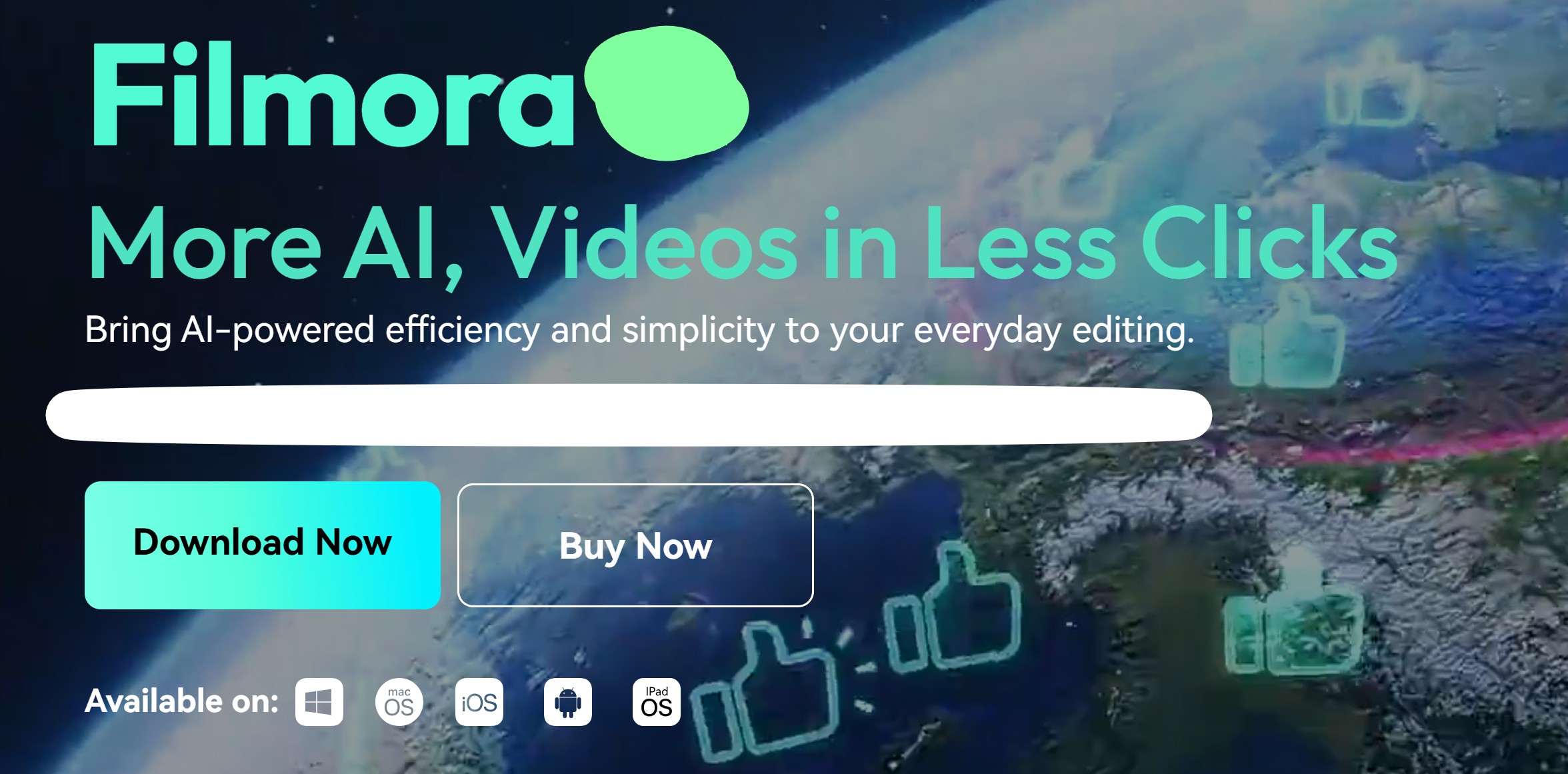
- Step 2:Launch the program. To immediately find the text-to-video feature, click on the three-dot div (…).
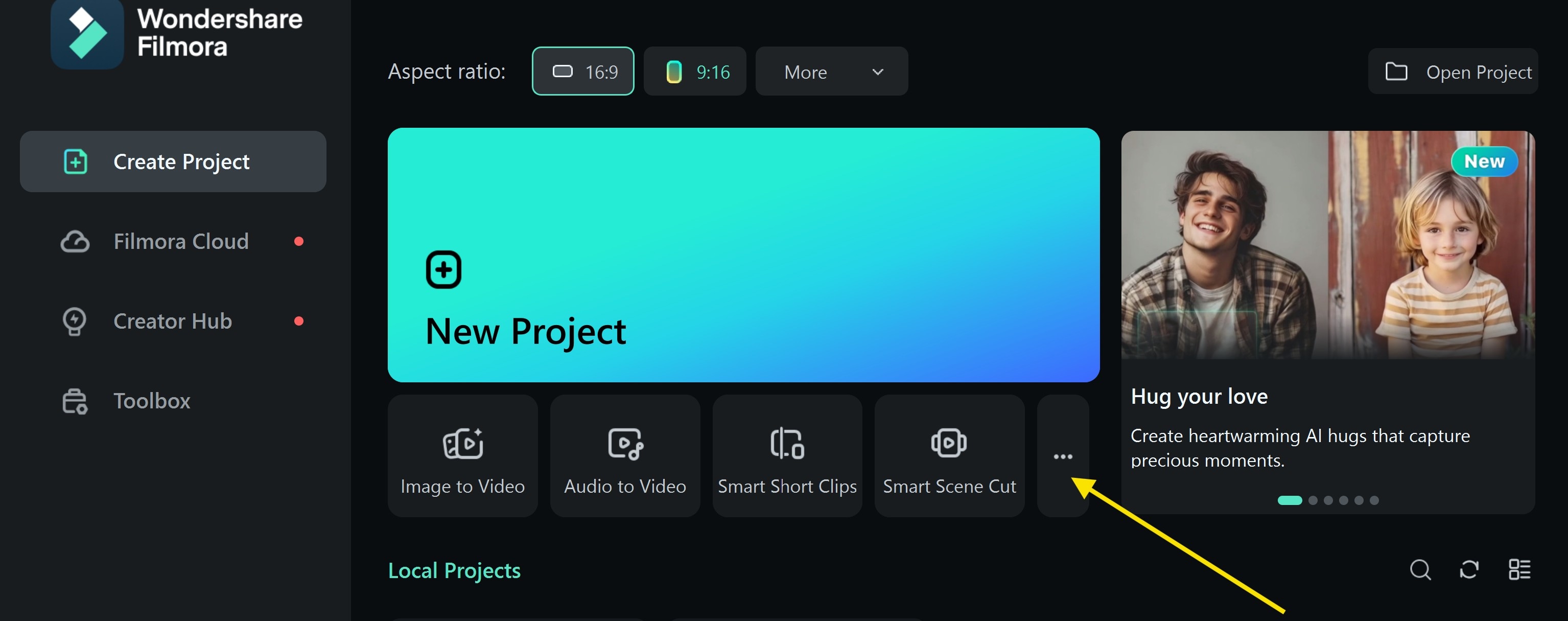
- Step 3:Browse through and choose “AI Text-to-Video” from the startup menu.
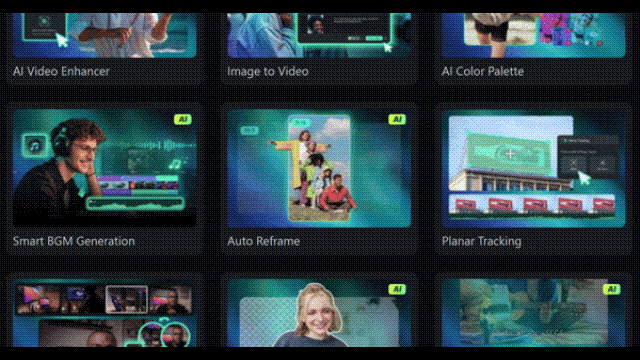
- Step 4:Describe your video idea using simple language. Mention what type of visuals you want, the mood, and the message. Be clear with what not to include. This improves the AI art generator’s accuracy. For example: “A lone figure walking through a digital wasteland, glitchy visuals, rain falling, low lighting, VHS filter, inspired by Blade Runner and dark AI art.”
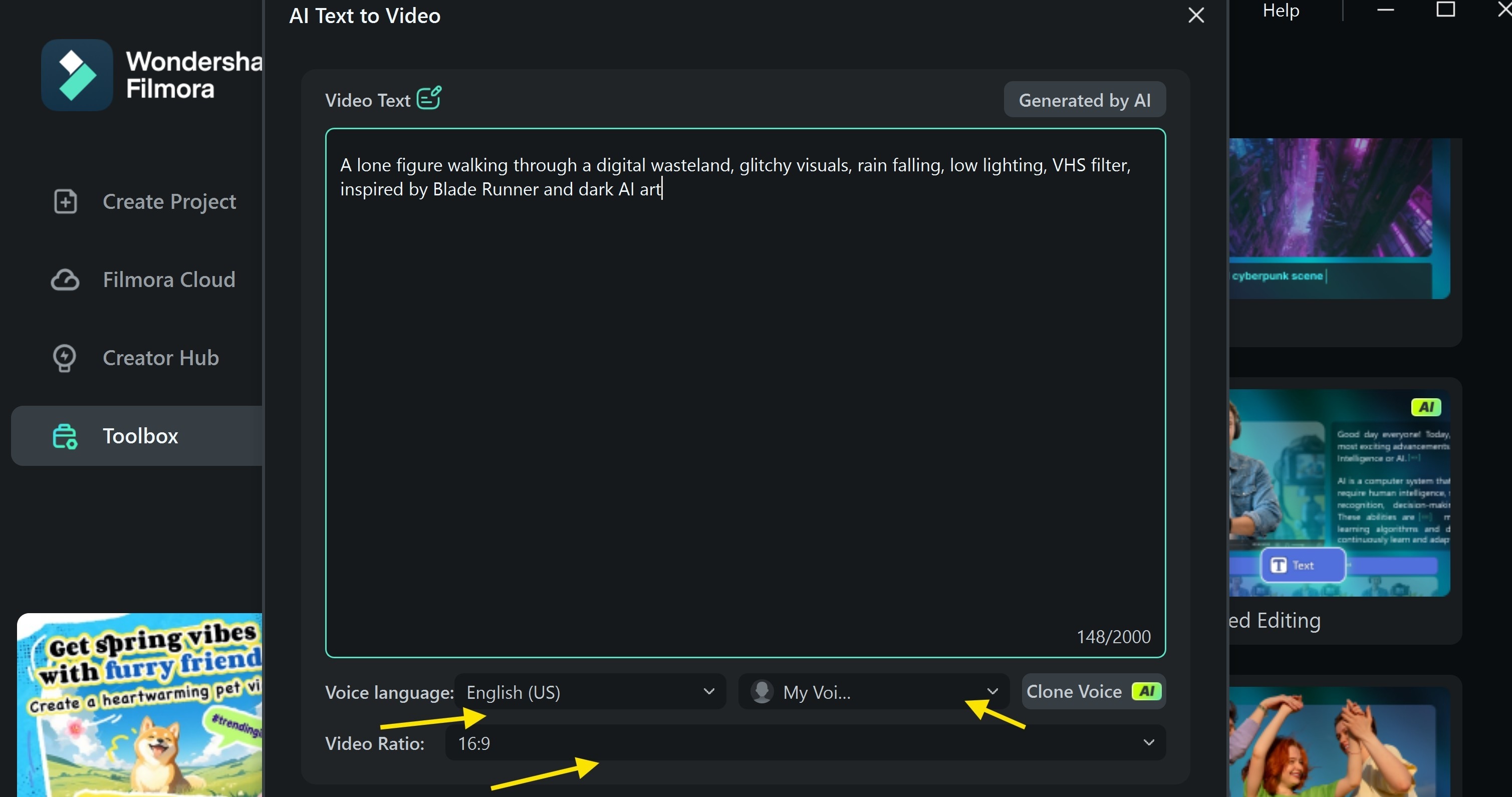
- Step 5Pick a voiceover style from Filmora’s built-in options. You can choose male or female tones in different accents. Then, select your video’s ratio. Click “Generate Video.” Filmora will process your prompt and begin building the visual story.
Method 2: Using Filmora Image to Video Feature
- Step 1:After launching the Filmora app, click on the three dots as shown above and browse through to select the image-to-text feature
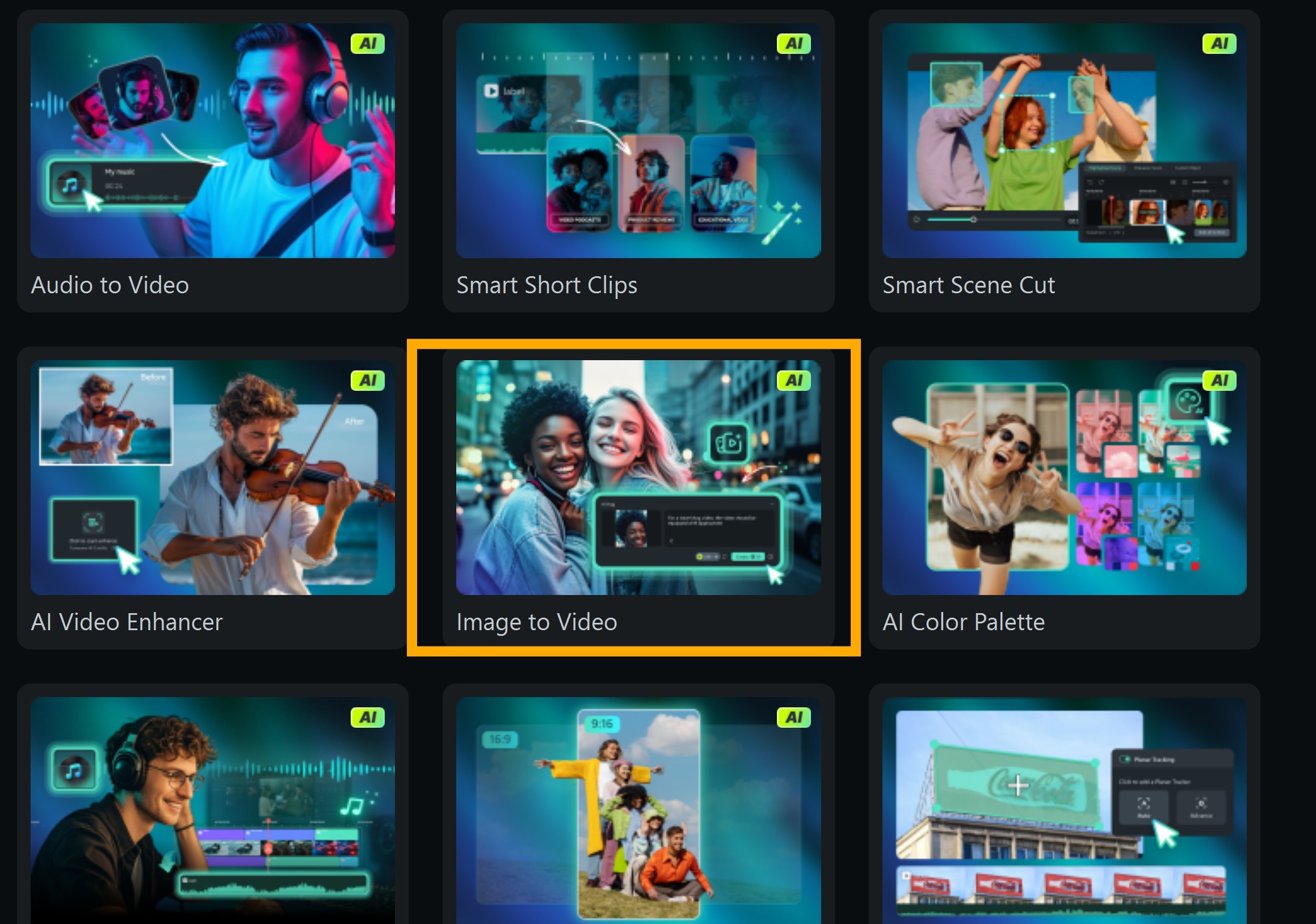
- Step 2:Upload the image and enter prompts of what the AI is to do with the image. For example, we will ask the AI to make the objects in the image jump and clap.

- Step 3:After the video is created, import the video into the timeline. Add motion titles, stickers, and transitions, and edit audio.
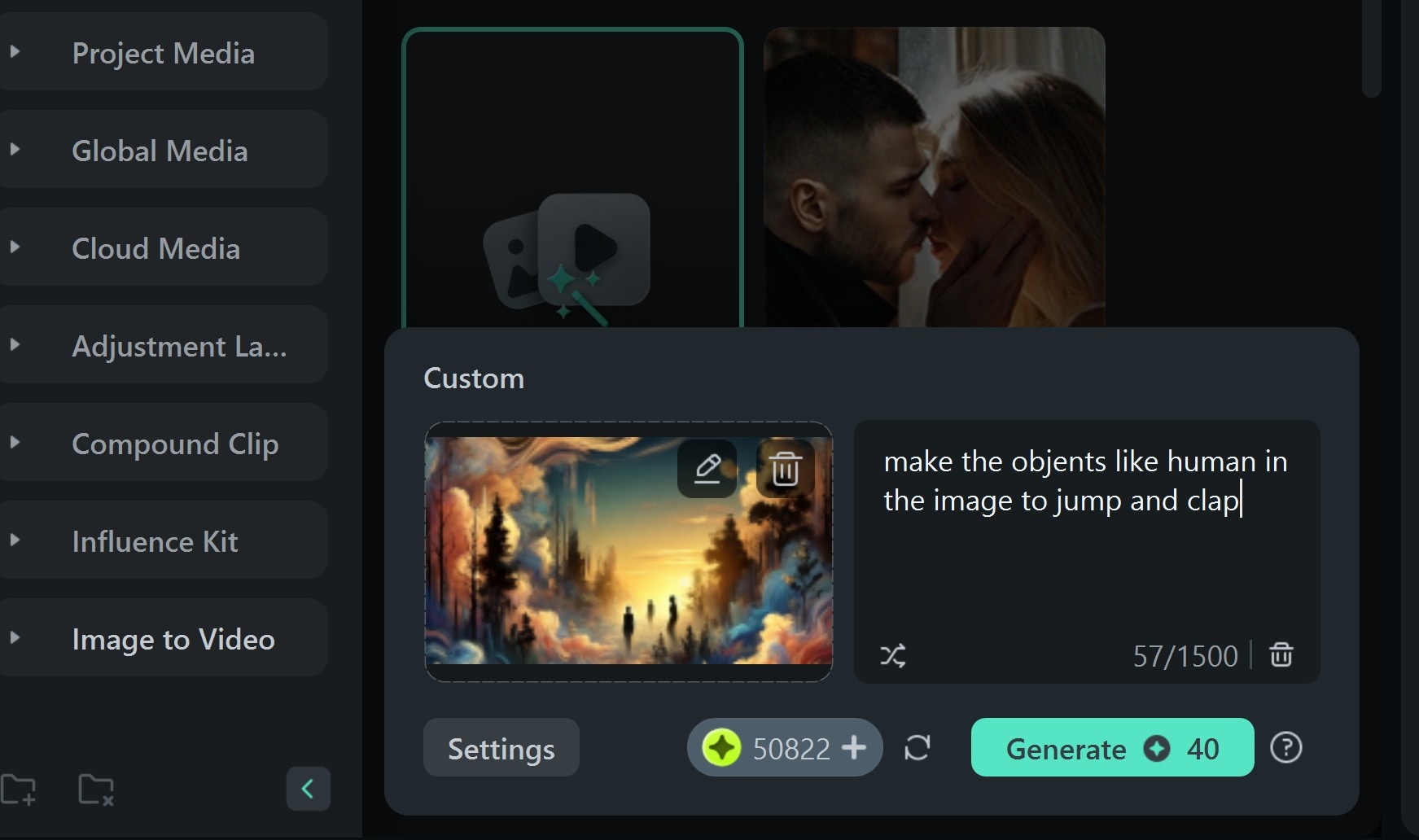
- Step 4:Preview Video
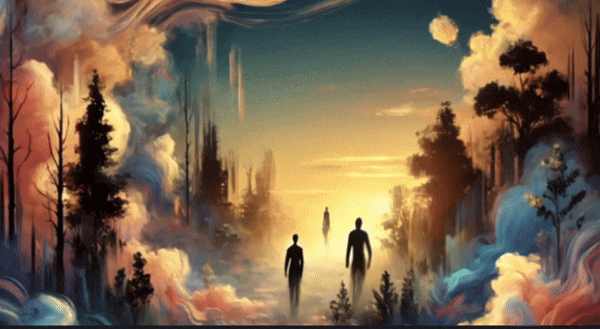
- Step 5:Import the video into the timeline to edit further if you feel there are some parts of the video that need some retouching
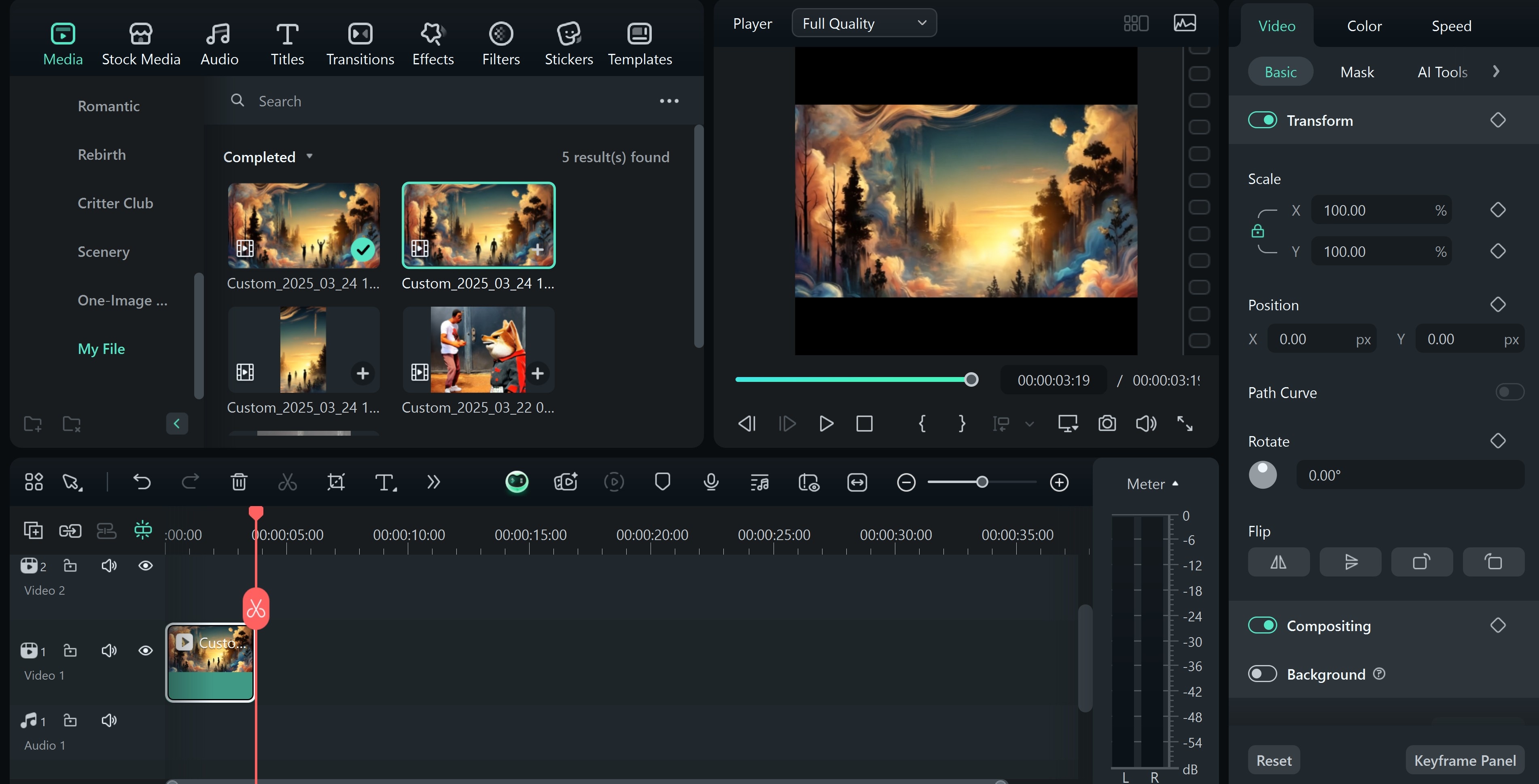
- Step 6:Click “Export.” Choose HD format and save it as an MP4 file. You can now upload your video to Instagram, YouTube, or even mint it as an NFT.
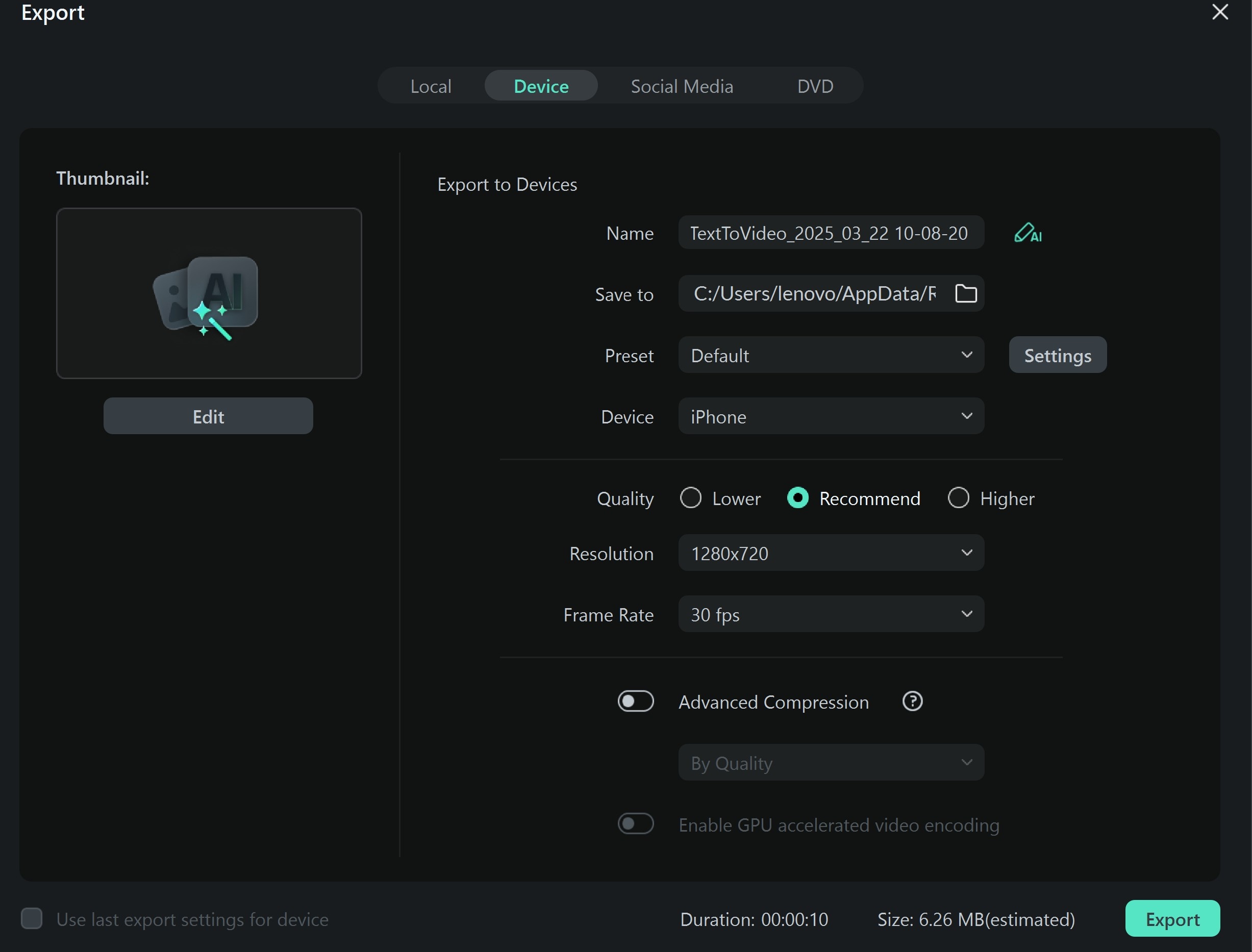
What If I Prefer Using Online AI Art Video Tools?
Some creators prefer generating AI art videos with online platforms, and that’s a great starting point. Tools like Runway are especially popular for turning text prompts into stunning visuals. However, many users still return to Filmora to polish and enhance their videos with pro-level editing tools.
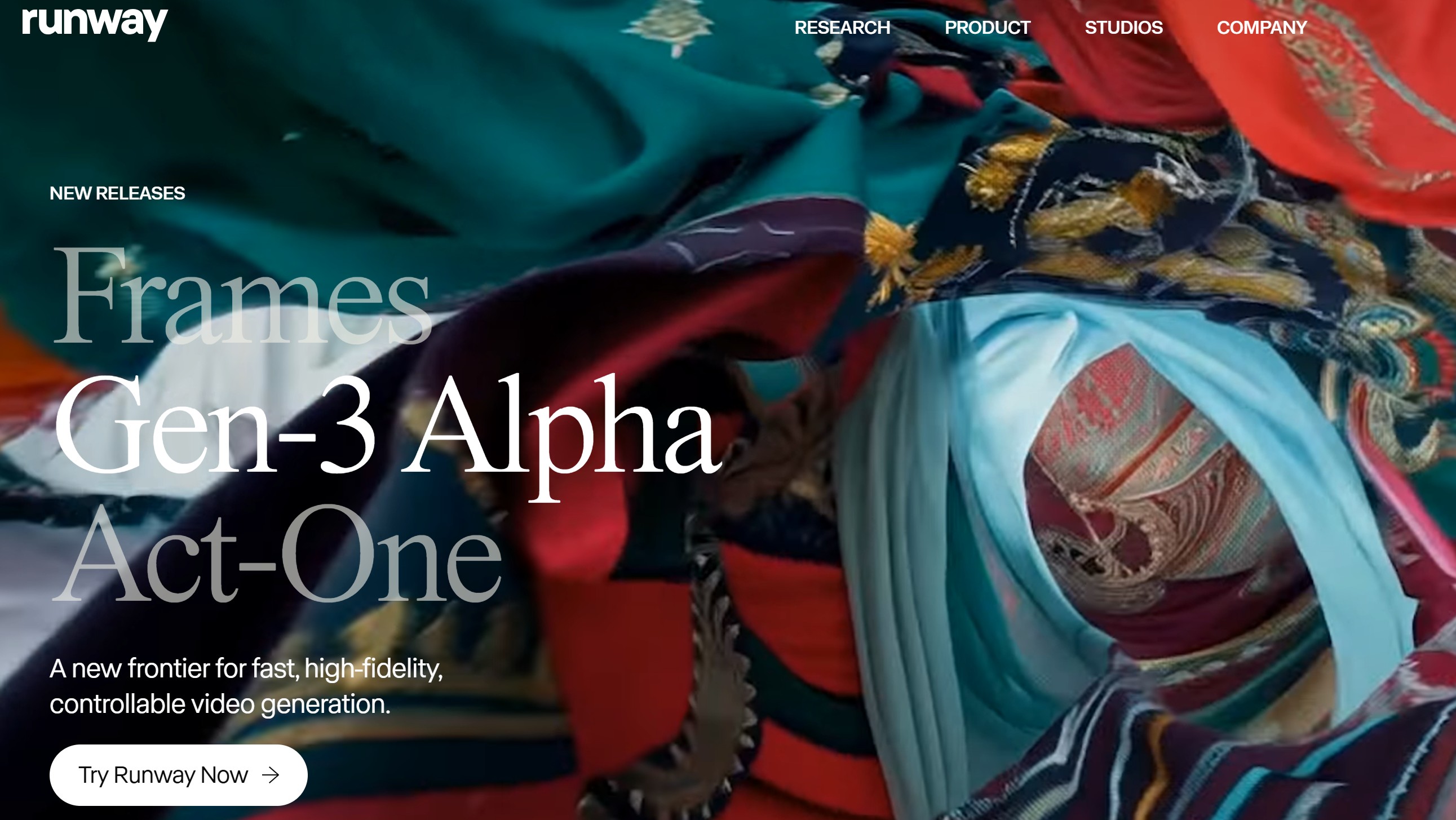
The method is simple—just use the text-to-video feature in your chosen AI tool, enter your prompts, generate and save the video, and bring it into Filmora for editing. It’s a flexible workflow that lets you combine the best of both tools: a powerful AI generator and a creative video editor.
Part 3: Different Types of Art Videos and Top AI Art Video Influencers
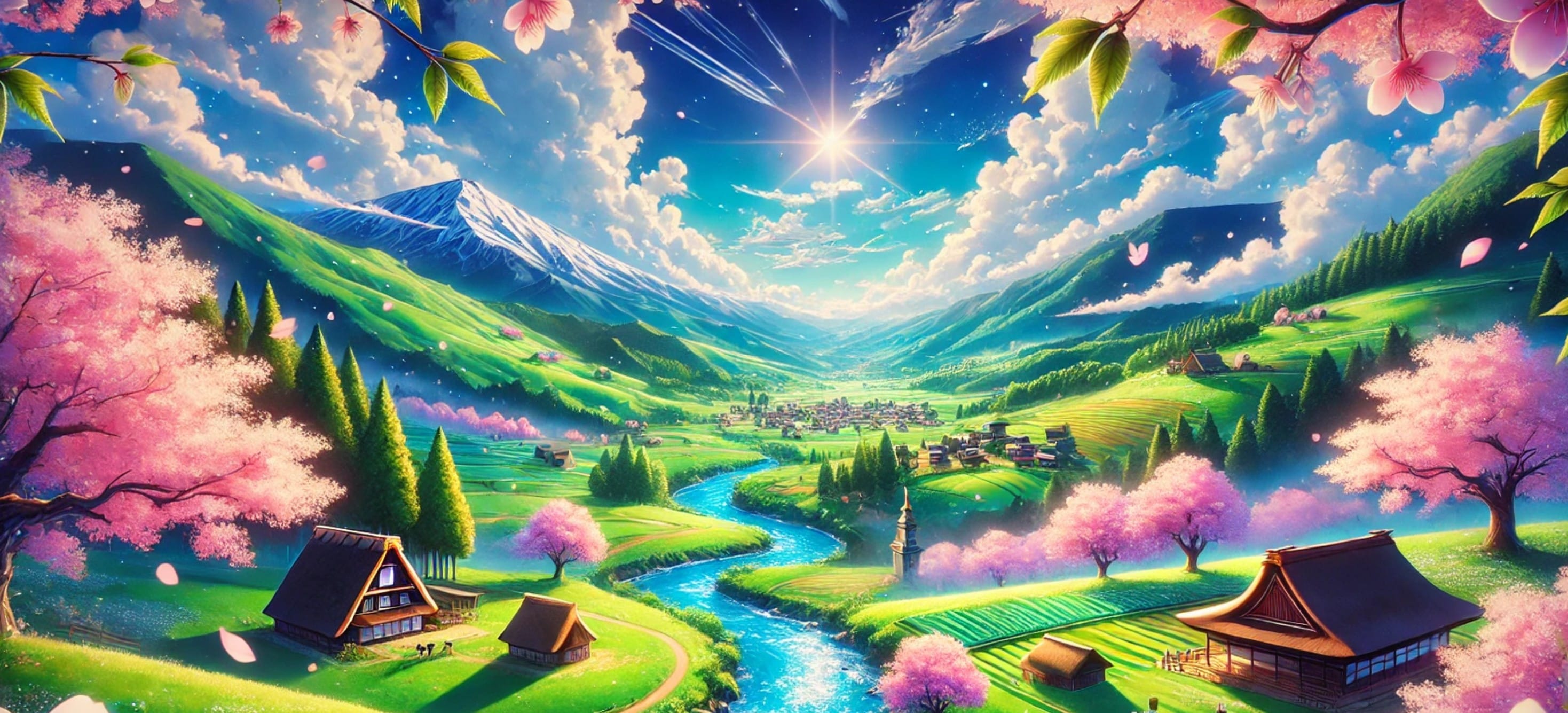
Many people ask what kind of videos they can make using AI. The truth is, the range is wider than you think. AI art video tools can create nearly anything, from abstract motion loops to surreal narratives.
If you want to understand how to make AI video art, start by comprehending the categories. Each one fits a different creative goal. Let’s break them down.
Types of AI Art Videos You Can Create

- Cinematic Shorts: These resemble trailers or mini-films. They combine AI visuals, voiceovers, and music.
- Animated Art Clips: Great for personal branding, turning still photos into expressive motion sequences.
- Generative Loops: Often used on social media, these include trippy, evolving art made from AI engines.
- Music Visuals: The AI reacts to beats or audio and animates patterns that follow the rhythm.
- Narrated Explainers: These combine text, voice, and symbolic graphics to explain ideas or showcase a brand.
- Digital Installations: Artists use AI to generate immersive videos for gallery walls or event screens.
Top AI Art Video Influencers to Follow
Some top social media influencers and creators are already leading this wave. They showcase what's possible using today’s top AI tools. These influencers use AI art video software in new and expressive ways. By following their work, you’ll pick up tricks, styles, and trends that keep your own creations fresh.
Each of them explores different styles and formats. Some use tools like Runway or Pika. Others rely on text-to-video features in tools like Filmora or KAIber. In short, if you’re serious about learning how to make AI video art, it helps to see how top creators do it.
| Influencer | Style Focus | Platforms |
| Claire Silver | AI-generated fine art | X (Twitter), OpenSea |
| Raf Grassetti | Narrative AI visuals | Instagram, ArtStation |
| Scottie Fox | Lo-fi generative loops | TikTok, YouTube |
| Emi Kusano | Lo-fi generative loops | Instagram, OpenSea, Art Blocks |
| Mehdayev Brayen | AI-integrated performance art | YouTube, Personal Website |
Part 4: Bonus—AI Art Video Trends in 2025

The AI boom has reached full speed, and 2025 is proof of that. Creators are now turning every AI-generated art video into a business model without a film degree. One major trend is turning these videos into NFTs.
Platforms like OpenSea, Zora, and Foundation allow creators to mint, list, and sell motion-based artworks. These NFTs are often used for digital collectibles, video drops, or visual branding projects.
If you’re wondering how to make AI art videos that sell, start by packaging them as short stories, animated promos, or abstract music loops. These formats perform well in digital art spaces and can also be monetized as visual assets.
Another trend is content licensing. AI creators are uploading their short-form art to stock platforms. Websites like POND5 and Artgrid now accept AI videos. Once uploaded, buyers can license them for use in campaigns, events, or presentations.
Conclusion
Using platforms like Filmora, you can create AI art videos in just minutes. You don't need cameras or timelines—just your vision brought to life through your descriptions. You have a lot more to do with Filmora, as it can serve as a standalone video editor.
So if you are already planning something, breathe life into it with this AI video software. It takes minutes to turn your art idea into captivating short videos.
- Vast video/audio effects and creative assets.
- Powerful AI for effortless content creation.
- Intuitive, professional yet beginner-friendly.
- Works on Mac, Windows, iOS, and Android.
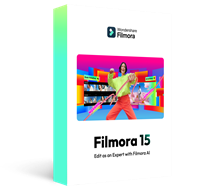



 100% Security Verified | No Subscription Required | No Malware
100% Security Verified | No Subscription Required | No Malware


